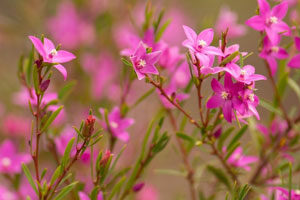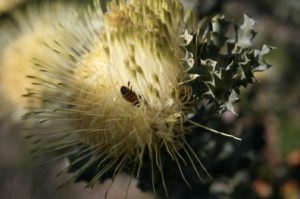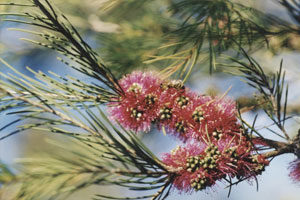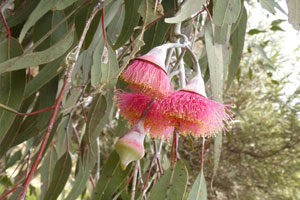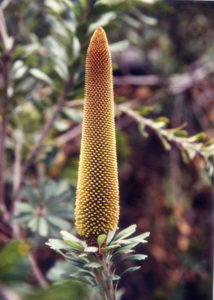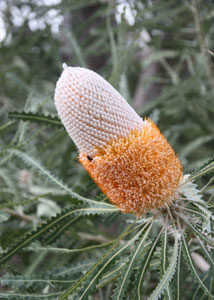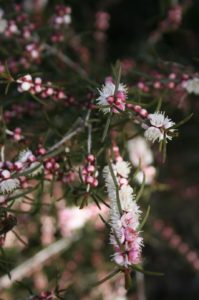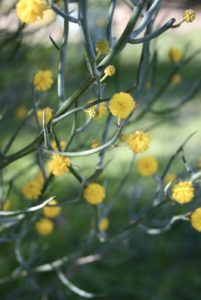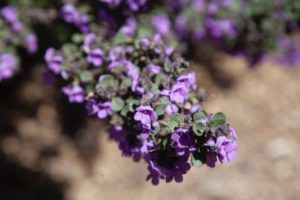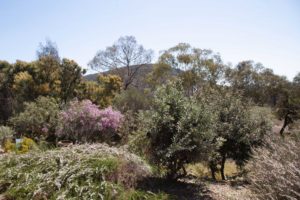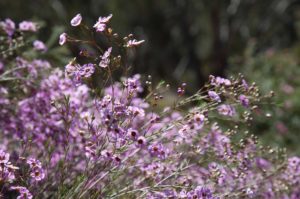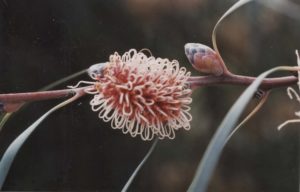The Garden
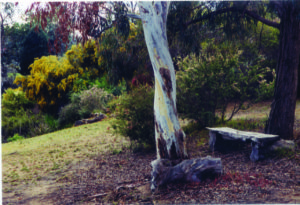 The garden, established in 1971, was designed and planted by the late Jill (Nancy) Rossiter. Her initial two acres were part of her cousins’—the late Nasons’—family property, which they later bequeathed to the Anglican Church. Jill acquired an additional acre from the church to connect to what was then the Warby Range State Park, land that was also originally owned by the Nason family.
The garden, established in 1971, was designed and planted by the late Jill (Nancy) Rossiter. Her initial two acres were part of her cousins’—the late Nasons’—family property, which they later bequeathed to the Anglican Church. Jill acquired an additional acre from the church to connect to what was then the Warby Range State Park, land that was also originally owned by the Nason family.
Jill recognized that the steep terrain, once a gravel pit, coupled with the arid climate, was ideal for certain Western Australian species that are often difficult to cultivate in the eastern states. She grew many of her garden plants from seeds collected during a trip around Australia.
The garden was designed as a ‘dryland garden’ to merge seamlessly with the bushland hills backdrop of the Kurringai Cottage property.
The landscape is designed to preserve and frame the view, with steep slopes covered and integrated, striking a balance between open spaces and dense shrubbery, as well as light and shadow.
The garden began as an exhibition of plants grown from her seed collection. Jill typically planted in clusters, which is the natural growth pattern for plants. She also tapped into the potential of designing with the foliage and form of Australia’s unique flora. Her success is still apparent, so much so that the design’s artistry might be overlooked due to its natural appearance.
Even when not in bloom, native foliage can be a standout feature. The garden embodies Jill’s preference for a natural aesthetic, despite including a collection of rare and challenging plants. Some of Jill’s insights on creating the garden were documented in “Ideas from Private Gardens” by Natalie McMaster and Jane Edmanson in 1986. Her garden was also featured in Victoria’s Open Garden Scheme in the early 1990s.
Approximately 25 years after her passing, her niece Jillian Rossiter, opened the property to various naturist and birdwatching groups. In 2021, I, Chris Farrell, took ownership of the property to maintain its significant heritage and introduced personal improvements to support the local wildlife by adding over 1300 plants and establishing multiple water sources.
*Updated Plant List coming soon!

